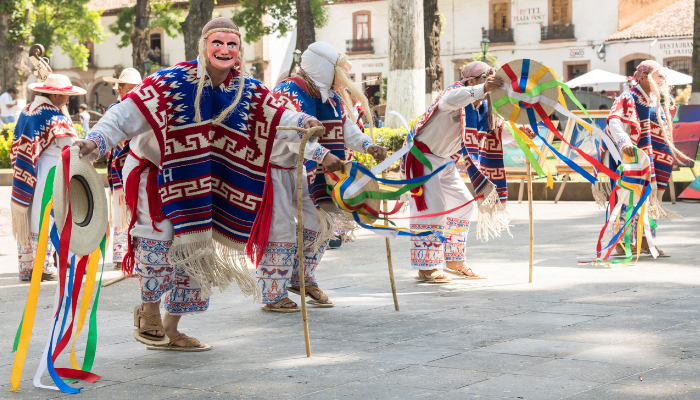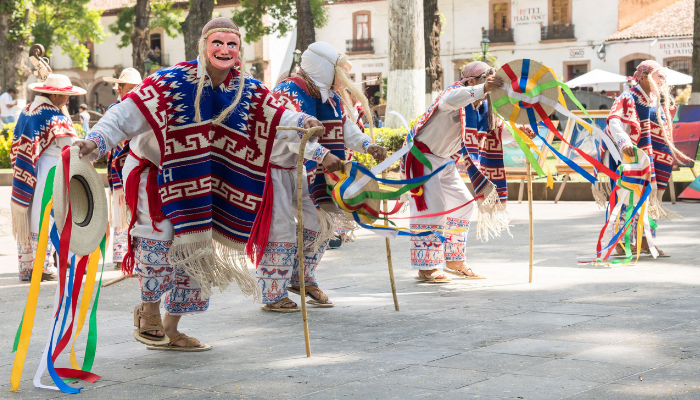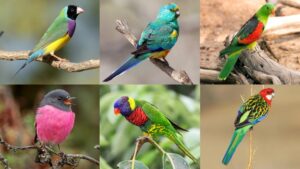5 Traditional Mexican Dance Forms You Must Know

Mexican dance
Dance aspects are very necessary parts of one country’s civilization. Traditional dances indicate the path of the existence of a country. Traditional Mexican dances assemble from the African, European, and indigenous origins of Mexico. These dances came to be within the moment from 1520 to 1750.
Mexican dancers couldn’t convey their entire rich history and influential heritage through one or two dance styles. So, the Mexican dances developed with colorful various dance styles.
Traditional Mexican dances are hugely famous in Mexico. Dance styles/forms like folkloric and jarabe are commemorated as a part of Mexico’s national essence, with dedicated troupes like ballet Folklorico. Mexican dance forms play a noteworthy role in affirming their country’s culture. Mexican dance forms attract many visitors.
Whereas the Spanish tried to do away with traditional Mexican dances, they were futile, with strong national pride and therefore the government investment in the organization of institutions like ballet Folklorico de Mexico, traditional Mexican dance still flourish and expand their culture.

Contents
- Mexican dance
- Five traditional Mexican dance forms
- Jarabe Tapatio
- La Conquista
- Danza De Los viejitos
- Danza del Venado
- Los voladores de papantla
- Moros y Cristianos
- Concheros
There are 5 famous traditional Mexican dancing styles.
Different dance forms arose from different regions of Mexico and have different characteristics and elements. Each dance type has its arterial and escorting instrument. Although there are only a few traditional dance forms in Mexico.
Jarabe Tapatio
(Mexican Hat Dance)
Jarabe Tapatio is moreover recognized as a hat dance. The tuxedos for this traditional jarabe Tapatio are intriguing and unique. The males are dressed in a charro outfit, while the females are dressed in a china poblana outfit. Many of the traditional Mexican dance is well-known throughout the globe.
This dance genre is uniquely nationalistic in that it is the country’s national dance. Within the year 1924, it had been named a national dance that furnishes a communal national identity to various cultures and this is a matter of national dignity for the citizens.
The provocation behind the jarabe Tapatio is Spanish jarabe gitano and zambra dance forms that are popular during viceroyalty. It was initially performed as a courting dance in the nineteenth century in Guadalajara, Jalisco.
La Conquista
La Conquista is one of the traditional Mexican dances that enacts the story of the Spanish conquest. Dancers portray all of the major historical figures, including Hernan Cortes, the conquistador. In Ancient history, it is a significant folk dance genre.
The Baile De Los Moros influenced the La Conquista dance style. The Baile De La Conquista is the name given to it by locals. The terrible narrative of the Spanish conquest is told via this dancing genre.
These two Mexican states- one Jalisco and the other bring Michoacan are where this dance form is quite popular. It originated in Guatemala and is now practiced across Latin America, with effects on the community.
Danza De Los viejitos
We can see Danza De Los viejitos mostly in the Michoacan state of Mexico.It’s an elderly gentleman’s dance. The ancient guys stand for the elements of soil, wind, flame, and water. This dance was created in the 20 century. This dance form was created as a caricature of the Spanish upper class with the rhythms of traditional folk dance.
Danza De Los viejitos use traditional clothes and traditional instruments. The women carry a fan in dance and the men dance with masks on. The most interesting element is that both males and females use wooden shoes. These wooden shoes give impact to each step they take. This dance form has some resemblances with other dance forms called hiehuenoth.
Danza del Venado
(deer dance)
The Danza Venadonado dance is also called the deer dance. This dance form portrays the story of the deer hunt and especially performs in springtime. This dance form is identifiable. And the dancers wear antlers with red-colored ribbon accents on their heads.
But it is still your first time viewing, you’ll be able to recognize the Danza del Venado dancers. This dance form is prominent across us and many shows happening all over the country. it hails from the vague areas of Sinaloa and Sonora.
Los voladores de Papantla
(dance of the flyers)
UNESCO has designated Los Voladores Papantla as an intangible traditional heritage place. It is called the dance of the flyers, and the English name of Los voladores de papantla is known as the dance of the flyers.
Where you will be in a panic by watching this performance, and you will take satisfaction in it.
Los voladores de papantla in this dance form will begin with five dancers scaling a pole with a height of 30 meters. Then four dancers will come down to the floor using a rope. But the fifth dancer will be on a pole tinkering with the drum and a flute.
The four dancers who are coming down are barely tied by a rope to the pole, where they whirl and wriggle on their way down.
There is a notion that the Los voladores de papantla dance of the flyers was established to pray to gods to stop a severe drought and help the people.
Moros y Cristianos
(Dance of the moors)
Moros y Cristianos is one of the Mexican traditional dance forms. It turned into a fact only in the 1600s. Moros y Cristianos is however referred to as the moors’ dance. This Mexican dance form isn’t native to the people of Mexico. Originally, it had been introduced by monks.
In this dance form, dancers perform to commemorate wars, struggles, and combatants between the moors and therefore the Christians. It had been during the Reconquista period. That’s why this dance form is named the dance of the moors.
The dancers endorse their grand entry with vociferous music and fireworks. The participants and therefore the audience are in the hundreds, and sporadically it’s even thousands.
Concheros
Concheros is a traditional dance structure of Mexico. The dancers are outfitted in indigenous costumes with a headdress and body paint. The name concheros came from an armadillo shell lute, which shows the influence of the Spanish and Europeans.
For centuries, such dance is performed has been known by a variety of titles. The additional names for concheros are Mexicas, Huehenches, chichimecas, and Aztecas.
Read More: Boss Katana





